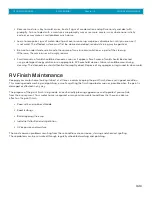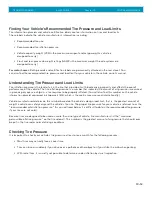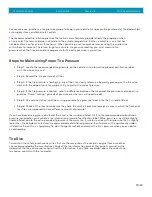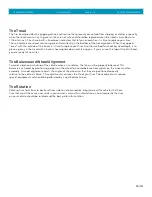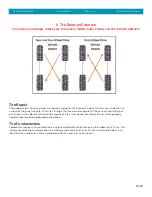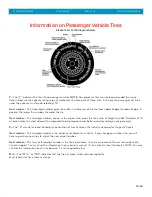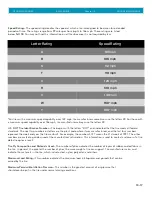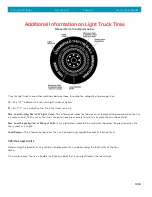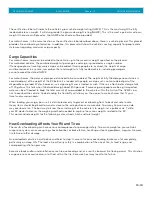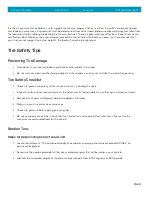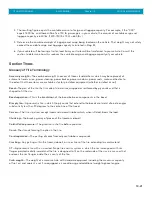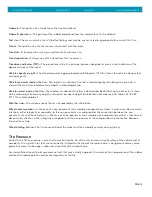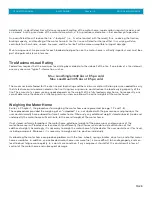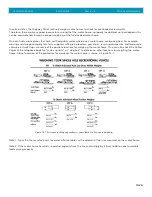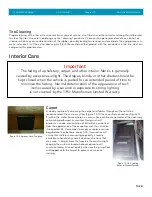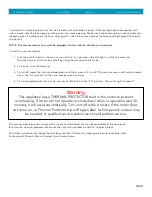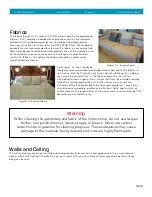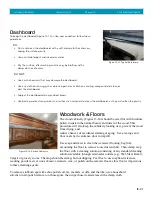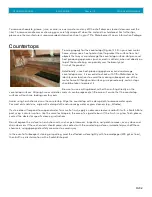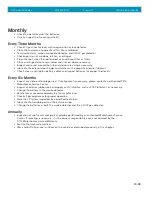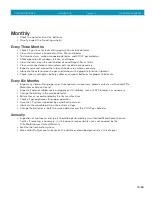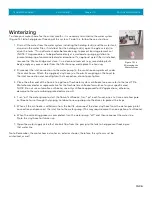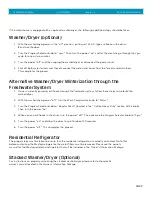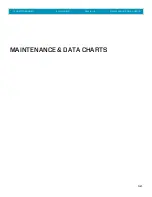
TIFFIN MOTORHOMES
–ALLEGRO BUS®
Chapter 13
ROUTINE MAINTENANCE
13-24
Sidewall
—That portion of a tire between the tread and bead.
Sidewall separation
—The parting of the rubber compound from the cord material in the sidewall.
Test rim
—The rim on which a tire is fitted for testing, and may be any rim listed as appropriate for use with that tire.
Tread
—That portion of a tire that comes into contact with the road.
Tread rib
—A tread section running circumferentially around a tire.
Tread separation
—Pulling away of the tread from the tire carcass.
Treadwear indicators (TWI)—
The projections within the principal grooves designed to give a visual indication of the
degrees of wear of the tread.
Vehicle capacity weight
—The rated cargo and luggage load plus 68 kilograms (150 lbs.) times the vehicle’s designated
seating capacity.
Vehicle maximum load on the tire
—The load on an individual tire that is determined by distributing to each axle its
share of the maximum loaded vehicle weight and dividing by two.
Vehicle normal load on the tire
—The load on an individual tire that is determined by distributing to each axle its share
of the curb weight, accessory weight, and normal occupant weight (distributed in accordance with Table I of CFR 49
571.110) and dividing by 2.
Weather side
—The surface area of the rim not covered by the inflated tire.
Wheel center member
—In the case of a non-pneumatic tire assembly incorporating a wheel, a mechanical device which
attached, either integrally or separably, to the non-pneumatic rim and provides the connection between the non-
pneumatic rim and the vehicle; or, in the case of a non-pneumatic tire assembly not incorporating a wheel, a mechanical
device which attaches, either integrally or separably, to the non-pneumatic tire and provides the connection between
tire and the vehicle.
Wheel-holding fixture
—The fixture used to hold the wheel and tire assembly securely during testing.
Tire Pressure
Correct tire inflation pressure is essential to maximizing the life of the tires and assuring the safety of the vehicle and its
occupants. Driving with tires that are not correctly inflated for the load of the motor home is dangerous and may cause
premature wear, tire damage, and/or loss of control of the motor home.
An underinflated tire will build up excessive heat that may actually approach the vulcanization temperature of the rubber
and lead to tread separation and/or disintegration of the tire.
Summary of Contents for 2014 Allegro Bus
Page 6: ... TIFFIN MOTORHOMES ALLEGRO BUS Chapter 1 GENERAL INFORMATION GENERAL INFORMATION 1 1 ...
Page 51: ... TIFFIN MOTORHOMES ALLEGRO BUS Chapter 5 CABINETS FURNITURE CABINETS FURNITURE 5 1 ...
Page 55: ... TIFFIN MOTORHOMES ALLEGRO BUS Chapter 6 STRUCTURAL FEATURES STRUCTURAL FEATURES 6 1 ...
Page 57: ... TIFFIN MOTORHOMES ALLEGRO BUS Chapter 7 ELECTRICAL FEATURES ELECTRICAL FEATURES 7 1 ...
Page 72: ... TIFFIN MOTORHOMES ALLEGRO BUS Chapter 8 SLIDE OUT FEATURES SLIDE OUT FEATURES 8 1 ...
Page 76: ... TIFFIN MOTORHOMES ALLEGRO BUS Chapter 9 EXTERIOR FEATURES EXTERIOR FEATURES 9 1 ...
Page 83: ... TIFFIN MOTORHOMES ALLEGRO BUS Chapter 10 INTERIOR FEATURES INTERIOR FEATURES 10 1 ...
Page 87: ... TIFFIN MOTORHOMES ALLEGRO BUS Chapter 11 PLUMBING BATH FIXTURES PLUMBING BATH FIXTURES 11 1 ...
Page 105: ... TIFFIN MOTORHOMES ALLEGRO BUS Chapter 13 ROUTINE MAINTENANCE ROUTINE MAINTENANCE 13 1 ...

